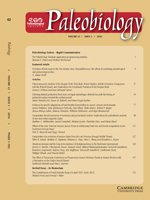The small size of Early Triassic marine organisms has important implications for the ecological and environmental pressures operating during and after the end-Permian mass extinction. However, this “Lilliput Effect” has only been documented quantitatively in a few invertebrate clades. Moreover, the discovery of Early Triassic gastropod specimens larger than any previously known has called the extent and duration of the Early Triassic size reduction into question. Here, we document and compare Permian-Triassic body size trends globally in eight marine clades (gastropods, bivalves, calcitic and phosphatic brachiopods, ammonoids, ostracods, conodonts, and foraminiferans). Our database contains maximum size measurements for 11,224 specimens and 2,743 species spanning the Late Permian through the Middle to Late Triassic. The Permian/Triassic boundary (PTB) shows more size reduction among species than any other interval. For most higher taxa, maximum and median size among species decreased dramatically from the latest Permian (Changhsingian) to the earliest Triassic (Induan), and then increased during Olenekian (late Early Triassic) and Anisian (early Middle Triassic) time. During the Induan, the only higher taxon much larger than its long-term mean size was the ammonoids; they increased significantly in median size across the PTB, a response perhaps related to their comparatively rapid diversity recovery after the end-Permian extinction. The loss of large species in multiple clades across the PTB resulted from both selective extinction of larger species and evolution of surviving lineages toward smaller sizes. The within-lineage component of size decrease suggests that only part of the size decrease can be related to the end-Permian kill mechanism; in addition, Early Triassic environmental conditions or ecological pressures must have continued to favor small body size as well. After the end-Permian extinction, size decrease occurred across ecologically and physiologically disparate clades, but this size reduction was limited to the first part of the Early Triassic (Induan). Nektonic habitat or physiological buffering capacity may explain the contrast of Early Triassic size increase and diversification in ammonoids versus size reduction and slow recovery in benthic clades.
How to translate text using browser tools
6 November 2015
Comparative size evolution of marine clades from the Late Permian Through Middle Triassic
Ellen K. Schaal,
Matthew E. Clapham,
Brianna L. Rego,
Steve C. Wang,
Jonathan L. Payne
ACCESS THE FULL ARTICLE

Paleobiology
Vol. 42 • No. 1
Winter 2016
Vol. 42 • No. 1
Winter 2016




